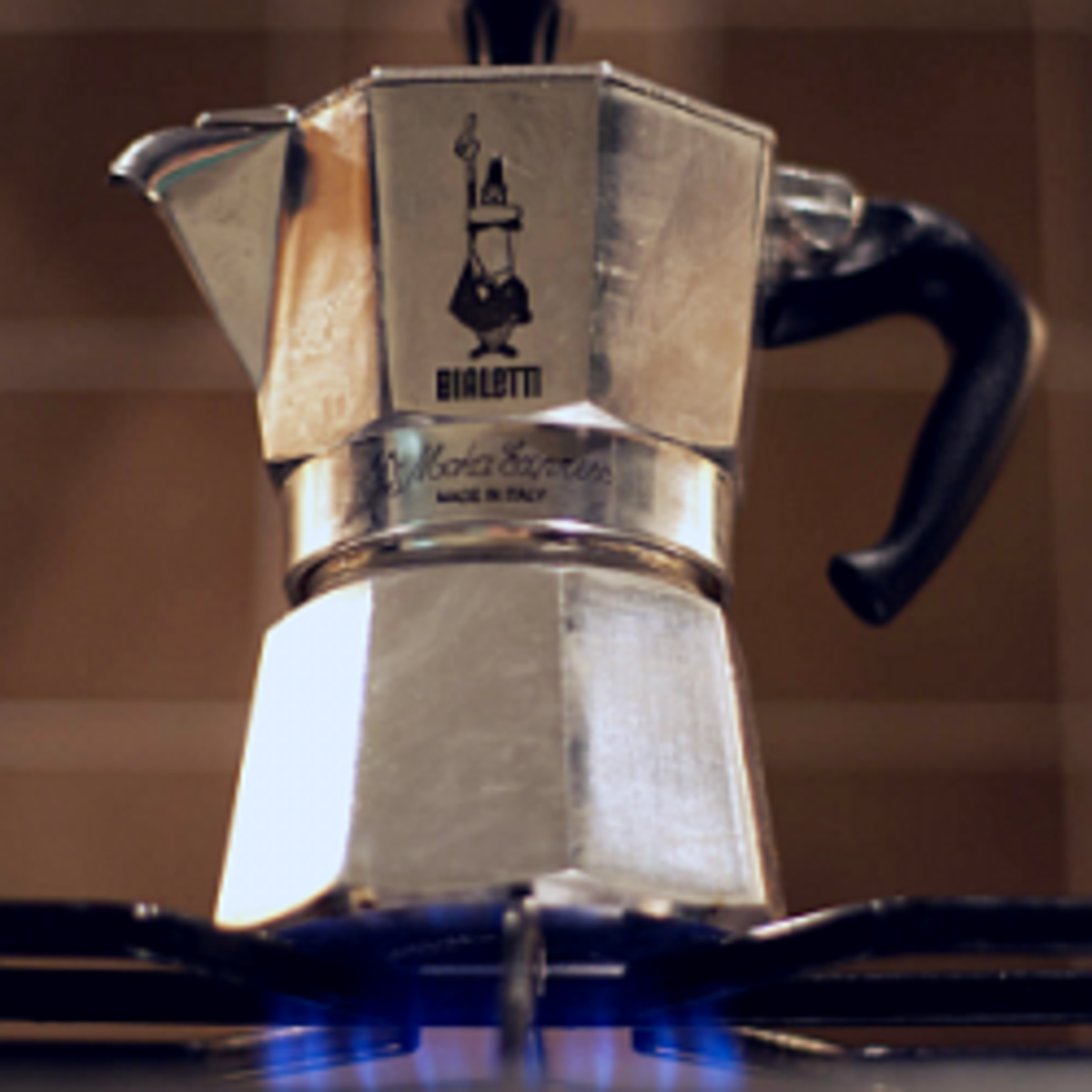A Coffee Primer - Part 3: Brewing Those Beans
Other Articles in This Series
This is the third installment in a series about coffee, as I post the continuation of the series I will update this hub with links here.
- The History of Coffee
- Know Your Roast
- Brewing Those Beans (you are here)
The basic idea of any form of brewing coffee is to apply the ground coffee beans to hot water, infusing the water with the flavor and essence of the grounds.
The first thing we will cover is grinding the beans. If you are among the camp of 'pre-ground coffee'ers, feel free to jump ahead to the appropriate subsection.
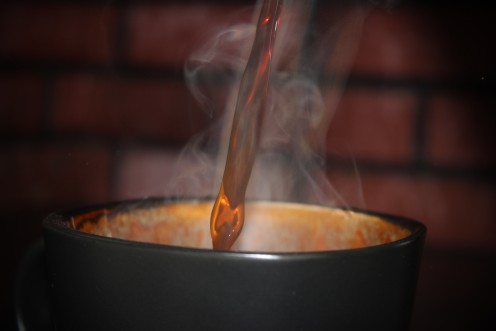
Grinding Coffee Beans
The first thing you're going to need is a good Coffee Grinder. Things could get really boring otherwise. Grind your beans according to the type of brew you plan on using. The chart below will help you determine grind duration.
Espresso
| Drip Brew
| French Press and Turkish Brew
| |
|---|---|---|---|
Grind
| Extremely fine
| Medium, a finer grind will make a stronger coffee, but don't overdo it or you might cause the coffee maker to malfunction.
| Coarse, the holes in a French Press strainer are larger than the holes in a percolator filter.
|
Caffeine
| 30 - 64 mg/oz
| 7.5 - 13.5 mg/oz
| 8 - 13.5 mg/oz
|
General Brewing Tips
- 95% of the caffeine is released in the first minute of brewing, so simply shortening the brew time doesn't make much of a difference to caffeine content.
- I prefer a ratio of 1Tbs. grounds per 6 oz. water in most cases, but this is only a preference.
- Optimum brewing temperature is 200° F.
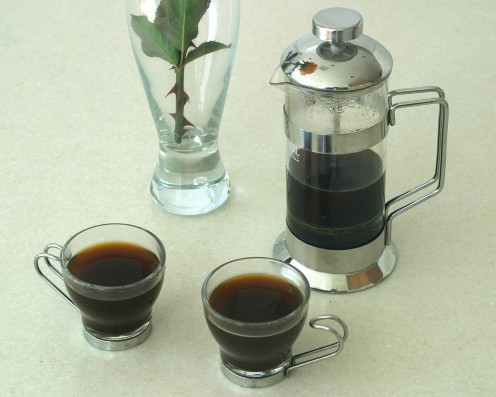
French Press
The French Press, a.k.a. the "Coffee Press", is considered by some to produce the best coffee possible. The French Press is designed around a cylindrical glass, often marked off with fill lines for coffee grounds and water. Connected to the lid is a plunger, the wire mesh on this allows the brewed coffee to pass through, but the grounds are caught.
To make coffee with a French Press, remove the lid, leaving the plunger on the bottom of the jar. Put in the appropriate amount of grounds in (I suggest 1 Tbs. coffee per 6 oz. water) while you boil your water. When the water is close to boiling, but not quite, pour it into your jar with the grounds. Put the lid on! You don't want the coffee getting cold while it brews.
Most people agree that four minutes brewing time for this method is best, although some say they like the bitter flavor imparted by longer steeping times. Each to his/her own, I suppose.
After the proper steeping time, slowly pull the plunger up, filtering out the grounds.
Serve and enjoy!
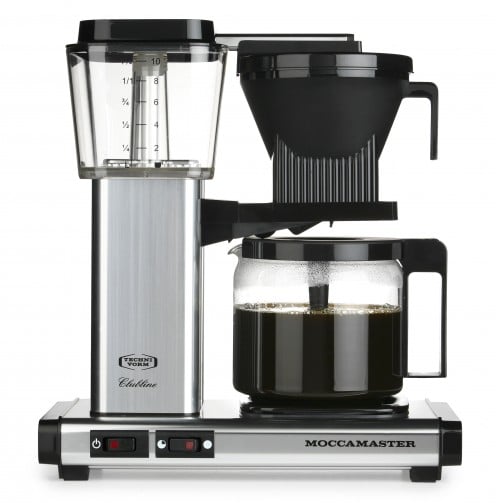
Drip Brew
Drip Brew is the most common brewing method. It uses gravity to to drip hot water into the grounds and through a fine filter into a waiting pot below. I can't give specific instructions for this method, as each model gives its own. While this is the easiest and least involved method, it can be argued that it produces a lower quality coffee.
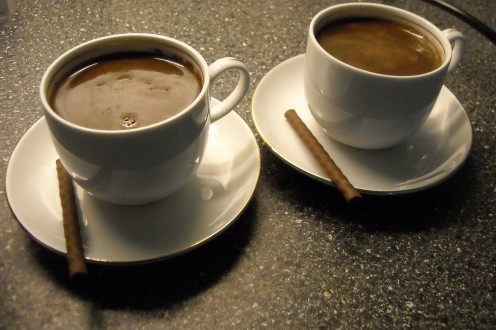
Turkish Brew
This is the most traditional form of brewing coffee. It is named the Turkish Brew after the Turks who developed the technique.
This method is claimed by some to be the best method of making coffee, but most don't like the strong flavor and residue produced.
The method is simple, while you water is boiling, put your grounds (1 Tbs. grounds to 6 oz. water) in a large jar. Once the water has reached optimal temperature, pour over the grounds and let it steep for four minutes. Strain using a fine filter, fix according to taste, and drink! Leave the residue at the bottom; no one will think any less of you for not drinking it.
Some prefer to steep the coffee longer than four minutes, but this imparts a bitter flavor to the coffee, so don't think it will simply get stronger.
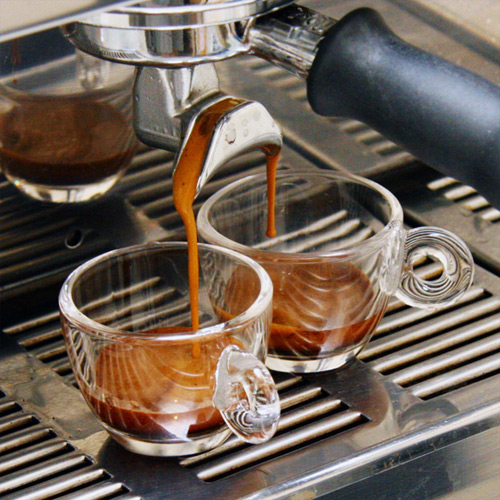
Espresso
Bring on the caffeine, baby! This method produces the strongest of any form of coffee, and is made by forcing steam through extremely fine coffee grounds. This makes a thicker, stronger coffee, extracting both the solids and liquids from the coffee grounds. This also gives the espresso its distinct crema, caused by emulsifying the coffee grounds' oils into the beverage.
I've never made espresso myself, but I thought I should mention what I do know here.
For more on brewing a good espresso coffee, read rondmrn's hub.
Which Method of Brewing do You Prefer?
Closing Tips For a Great Brew
- If you can, use fresh ground beans. These will have more flavor than their pre-ground counterparts.
- Keep an eye on your coffee (as if I needed to tell you, coffee fiend; standing there, waiting and counting the seconds). Drip machines have a hot plate to keep your coffee from getting cold, but it can "cook" your coffee if you leave it too long.
- Mind your grind. If your coffee is ground too coarse, it may be weak. If too fine, the straining process could go wrong.

